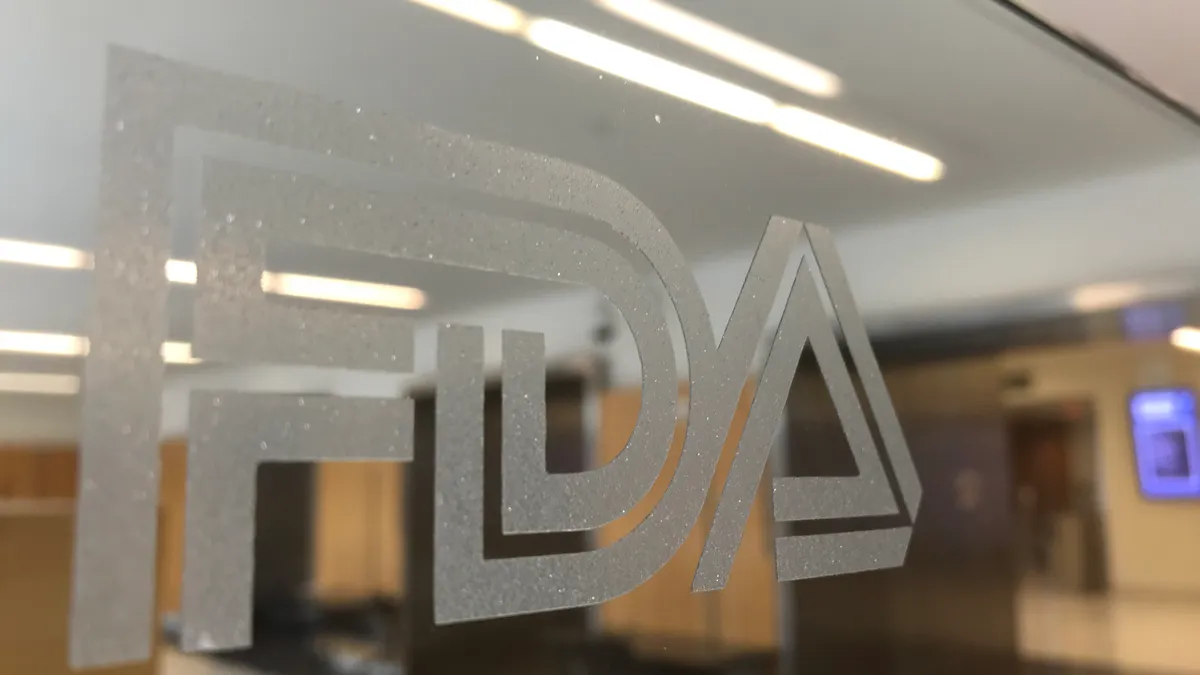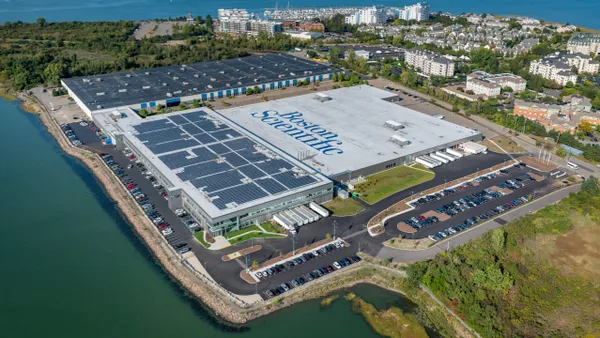Dive Brief:
- FDA has granted breakthrough device status to a closed loop automated insulin delivery system for people with Type 1 diabetes, in development by Korean medtech EOFlow, according to partner JDRF.
- The company's EOPancreas device features an integrated, wearable, disposable patch design with insulin delivery and continuous glucose monitor subsystems being run by a closed loop, AI-based algorithm for blood glucose control. The algorithm itself operates on the company's cloud system, which executives say allows for customization of closed loop control on a patient-to-patient basis.
- The breakthrough designation, which could expedite the product's path to market, follows FDA awarding the special status in February to a personalized closed loop device being designed by Medtronic.
Dive Insight:
An 'artificial pancreas', which can also be called a hybrid closed loop system or automated insulin delivery system, typically consists of a blood glucose monitoring tool like a CGM, an insulin pump, and an algorithm that helps the two devices communicate automatically, all with the goal of reducing periods of hypo and hyperglycemia and giving users greater autonomy in their disease management.
FDA issued a guidance in 2012 on development and commercialization of artificial pancreas (AP) systems. Four years later, the agency cleared Medtronic's MiniMed 670G for patients age 14 and older, making it the first commercially available device of its kind.
Other companies are racing to market similar systems. Bigfoot Biomedical is looking to launch its own insulin delivery system compatible with Abbott's FreeStyle Libre CGM in 2020, and a system combining Dexcom's CGM, Tandem's insulin pump and a TypeZero Technologies algorithm could be launched before the end of 2019, according to Tandem.
JDRF, formerly known as the Juvenile Diabetes Research Foundation, had been working on its Artificial Pancreas Project since 2006. While the 2016 MiniMed 670G approval largely satisfied the organization's goal, JDRF pledged to continue pursuing AP advancements and broadening access to the technologies.
Last year, the organization threw its weight behind behind EOFlow, which is based in Seoul and San Jose, California, expressing particular interest in the company's potential to create an AP system optimized for use in children. JDRF noted the electroosmotic nature of EOPatch, the company's wearable, disposable, smartphone-integrated insulin pump device approved by the Korean Ministry of Food and Drug Safety allows it to be relatively small and lightweight.
"Currently, AP system hardware is bulky and either in direct contact, tethered to, or in very close proximity to the body, which may be barriers to the subsequent widescale adoption of AP systems," JDRF noted in announcing the partnership in January 2018. "This factor is especially compounded in children, where skin real estate is at a premium."
The partnership provided EOFlow with funding to further develop and run clinical studies on the device. Other JDRF beneficiaries in recent years have included Bigfoot Biomedical and IBM.
"EOFlow was founded to democratize wearable drug delivery solutions by providing intelligent, connected solutions for patients managing chronic conditions at globally-competitive price points", said Jesse Kim, CEO of EOFlow in a statement, calling the designation "as an important validation of our business model."
In February, Medtronic said it received breakthrough status for development of a personalized closed loop system, which it characterized as having real-time, user-adaptive automated insulin delivery while also providing predictive diagnostics and patient-specific insights. The company said it planned to leverage its November 2018 buy of nutrition data science company Nutrino Health in developing the more individualized system.
When FDA released new guidance on the Breakthrough Devices Program in December, the agency said it had awarded the special designation 110 times since 2016, with eight of those recipients to date having brought the associated product to market. While companies are not required to disclose their breakthrough status and FDA does not announce recipients, many companies choose to publicize the designation.
Known recipients of the breakthrough device designation so far this year include:
- an intrathecal drug delivery system
- an AI tool for cancer diagnosis
- a gene test for antibiotic resistance
- a fluid management software for hemodialysis
- an assessment of amyloid beta in cerebrospinal fluid for early identification of Alzheimer's disease
- a concussion-detecting virtual reality headset
- a non-invasive electrical stimulation device aiming to cut time on mechanical ventilation
- a wearable, portable peritoneal dialysis device
- a pan-cancer assay that detects solid tumor biomarkers
- a set of digital diagnostic and therapeutic devices addressing autism
- a 'tumor monorail' device that can draw cancerous cells to the edge of the brain for extraction
- a protein biomarker test that aims to confirm concussions in less than 90 seconds
- a pre-PET scan blood screen for amyloid build-up between brain neurons, a sign of Alzheimer's











